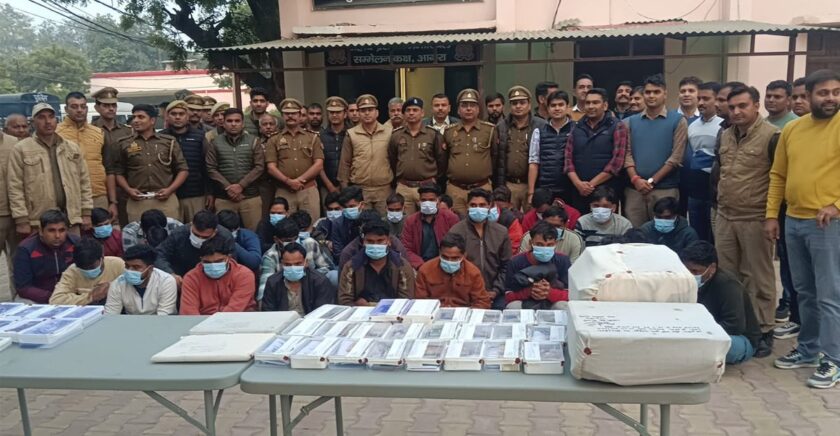Lucknow: As the capital of Uttar Pradesh, Lucknow plays a significant role in shaping the state’s overall governance and development. With its rapidly growing population, urbanization, and increasing economic activities, ensuring the safety of residents and maintaining law and order has become paramount. Crime control in the city relies heavily on effective surveillance systems, which help authorities maintain security, prevent criminal activities, and enhance the overall safety of citizens.
Importance of Surveillance in Crime Control
- Preventing Crime: Surveillance is a deterrent to potential criminals, as the presence of cameras and monitoring systems increases the likelihood of being caught. This discourages street crimes like theft, robbery, and assaults, making public spaces safer for residents.
- Quick Response to Incidents: With a strong surveillance network, law enforcement can respond swiftly to emergencies. Real-time monitoring allows police forces to be alerted to incidents as they happen, reducing response times significantly and preventing escalation.
- Gathering Evidence: Surveillance footage often provides crucial evidence in investigations, helping law enforcement agencies to identify suspects, understand crime patterns, and gather data for prosecution. Video evidence also helps clear misunderstandings and ensures justice is served.
- Public Confidence: The presence of surveillance systems enhances public trust in law enforcement. Knowing that there are mechanisms in place to ensure safety gives citizens a sense of security, encouraging them to report crimes and cooperate with authorities.
- Monitoring High-Risk Areas: Surveillance helps in tracking high-risk areas such as markets, transport hubs, commercial zones, and near government buildings. These locations are often targeted for criminal activities, and surveillance ensures constant monitoring.
Methods of Surveillance in Lucknow
- CCTV Cameras: The deployment of CCTV cameras is the most common surveillance method in Lucknow. These cameras are strategically placed in busy areas, markets, residential zones, and key intersections. The coverage allows for constant monitoring of public spaces, reducing opportunities for criminal activities.
- Smart Surveillance Systems: Leveraging artificial intelligence (AI) and machine learning, smart surveillance systems are being implemented to improve crime detection. These systems can identify suspicious behavior, track faces, and detect movement patterns, automatically alerting authorities to potential threats.
- Police Patrolling and Mobile Surveillance: Patrolling by police forces, both on foot and in vehicles, ensures that areas are monitored in real-time. Mobile surveillance units with cameras can be deployed to areas that need temporary or heightened security during events or emergencies.
- Integrated Command Centers: Lucknow has an Integrated Command and Control Center (ICCC) that consolidates all surveillance data, including CCTV footage, traffic management systems, and emergency calls, under one roof. This helps authorities coordinate and manage responses to incidents efficiently.
- Drones and Aerial Surveillance: Drones are increasingly used to monitor large crowds and events, offering a broader perspective on any situation. They are also valuable in tracking areas that are hard to reach by ground forces, such as outskirts or difficult terrains.
- Facial Recognition Technology: With the advent of advanced technology, Lucknow is exploring facial recognition systems integrated with its CCTV infrastructure. This can help in identifying criminals and missing persons more effectively.
- Cyber Surveillance: In the digital age, cyber surveillance is essential in tracking online crime, including cyberbullying, hacking, and online fraud. The city is increasing its focus on monitoring digital platforms and social media for illegal activities and potential threats.
Challenges and Considerations
While surveillance plays an essential role in crime control, it is important to consider several challenges:

- Privacy Concerns: Balancing surveillance with individual privacy rights remains a critical issue. Ensuring that surveillance does not infringe on personal privacy is an ongoing challenge for authorities.
- Data Security: The vast amounts of data collected from surveillance systems need to be protected from unauthorized access and cyber threats.
- Financial Investment: Setting up and maintaining surveillance infrastructure is an expensive undertaking. Continuous funding and technological upgrades are essential to keep the systems effective.
Surveillance is a vital tool in ensuring crime control in Lucknow, contributing to public safety, crime deterrence, and quick response capabilities. While there are challenges related to privacy and the costs of implementation, the benefits far outweigh the risks. With advancements in technology, Lucknow’s surveillance systems are becoming more sophisticated, helping to create a safer environment for residents and supporting law enforcement in their mission to reduce crime.





